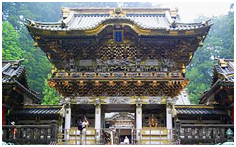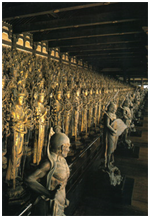Now Let’s get to Japan 1979
July 9, 1979 Korea/Japan
Monday.
Today we transferred to Tokyo. First we took the bus to Pusan the big port of Korea and also sister cities with Los Angeles, California and Vladivostok, Russia…
Went directly to the airport PUS. Helped the JAL representative write a letter to KAL protesting inadequate service to passengers. David especially remembered talking to this guy, even thirty years later. We are flying open jaw as we did not return to Seoul. We will do that again when we depart Japan from Osaka to Hawaii.
Got to Japan about six-thirty in the evening. Narita airport NRT is about two hours from Tokyo. Its construction, starting in 1969 was the subject of much controversy and protests. It is about 2 hours East of Tokyo in Chibu Province. We took a bus, and two trains to get to the Okubo house, the place we are staying. Shinjuku ward (新宿区, Shinjuku-ku?)
Met an obnoxious person named Jerry. He had been in Japan a long time. He had opinions on everything. It turned out some of the advice he gave us was not too good. Jerry was from California. He was obsessed with Jerry Brown and Linda Ronstadt. The Okubo house had very strict rules including an 11:00 curfew everyone in bed and lights out.
 Bridge Imperial Palace Tokyo
Bridge Imperial Palace TokyoTuesday
Our first day in Tokyo. Spent the morning getting permission to see the Royal Palace and changing money. While downtown we met a Japanese business man. He wanted to show us his office. So the three of us went with him. They do that sort of thing. He was very friendly. His office was in a highrise overlooking the garden of the imperial palace, Chiyoda castle. He said we were not supposed to look at it, but of course we did. It was hard not to.
He had a great view of the rest of downtown Tokyo from his office, Shinjuku.

Chiyoda
Had a good lunch: prawns and rice. Ordered from the plastic models outside. Like Shinbashi Shinbashi (新橋), Ginza Ginza (銀座) is one of the downtown districts of Tokyo. World renowned main shopping and entertainment district. Walked around the Ginza with Jim looking at cameras. Stopped to play pachinko and one electronic game machine(now called video game). Remember Atari had only introduced video pinball in 1977. VCR’s were the new thing and Betamax. Nintendo, Mario and X-box were unheard of. They both seemed to be very popular.
At night we went to a baseball game Puro Yakyū (プロ野球) or bayse’ baru, Nippon Hamu (the Fighters) vs. Lotte (from Kawasaki). The game lasted about three and a half hours. The final score was 12-3 in favor of the home team. http://allbaseball.blogspot.com/
 Pachinko Parlor
Pachinko ParlorWednesday
Today we made it inside the imperial palace. It was a big let down. The only building we got to see that we hadn’t seen before was the Hall of the Tokyo summit.
Press Release on Air-Hijacking, June 29, 1979 and boat people refugees from Vietnam.
All of the buildings are new. We also got a twenty-minute explanation all in Japanese. The best part was talking to the other people on the tour.
After the tour we went up to Nikko. It was beautiful. We didn’t get to see much as it was raining. We did see the main Toshogu shrine and one other temple. The style is very ornate, a kind of baroque, Japanese style. The point of the whole thing is to honor the dead shogun as well ass keep the local barons under control by keeping them broke and keeping them at the shrine so that they could be spied upon, similar to Louis XIV in France.
Met some Austrians at the station (Bahnhof) and had a nice conversation on the way back.
Thursday Tokyo/Yokahama/Kyoto
 Great Kamakura Daibutsu
Great Kamakura DaibutsuTokyo Bay (東京湾, Tōkyō-wan ?) is a bay in the southern Kantō region of Japan. It is where the treaty ending the war with Japan was signed. Today we played tourist in Kamakura鎌倉市, Kamakura-shi? near Yokohama Kanagawa Prefecture
about an hour south of Tokyo. Of course our first stop was the Daibutsu of Kamakura. It is the second largest Buddha in Japan. We also visited the local museum with several national treasures. The city abounds in temples and shrines including Hase Kanon-oji the 11 headed goddess 菩薩, bosatsun bodhisattva with a beautiful view of the sea, Tsurugaola/Hachimangu, Kencho-ji and Engaku-ji.
We left by train at about three heading for Kyoto with the intention of heading for Mt. Fuji on the way. The connections proved to be too difficult, but the day seemed to be too foggy anyway.
We started by local train (four hours) but changed to the bullet train (Shinkansen) in Hamamatsu. The high-speed train that runs from Tokyo to Osaka. From there it took about two hours to get to Kyoto.
In Kyoto we stayed at the Tani house. It is a Japanese style inn, ryokan (旅館) with tatami-mats on the floor communal baths and sliding doors. There six people in the room, including two Germans who stayed in the same place with us in Tokyo, Okubo house. Our room is very nice it opens up to the outside with a view into a bamboo garden from the second floor.
Friday Kyoto
The temple of 1000 Buddhas (sanjusangendo) dedicated to the bodhisattva Kannon
Today we toured Kyoto. First we went to the Heian Shrine, a Shinto shrine. Built in 1895, it is large red building with definite Chinese influence. We had fun feeding the fish.
After lunch a local restaurant we went to Ginkaku-ji, or silver pavilion. In addition to the pavilion there were raked white san gardens. Some represent geographical points such as Mt. Fuji and the West lake of China.
Next we toured Nijo castle (二条城, Nijō-jō?), one of the best sites of Kyoto. We actually got to go inside the castle. The building was more a palace that castle, but still very nice. Although most of the furniture is gone the floor mats, murals and carved transoms remain. The garden is also very nice. Ran into a little league team that was jogging around the castle.
Walked around town and did some shopping. Bought chicken at a street stand for dinner.
Saturday Kyoto
This morning we saw the imperial palace. Although the original had burned down several times it has always been restored. Today it is still used to crown the new Japanese emperors. There are three traditional capitols of Japan Nara the oldest next Kyoto and finally Tokyo the present capitol. The Current Emperor is (天皇, tennō?, literally “heavenly sovereign,”[) Hirohito the same as WWII his birthday is a national holiday and the same as mine April 29. (昭和天皇, Shōwa tennō?), (April 29, 1901 – January 7, 1989) was the 124th Emperor of Japan
Next Jim and I walked down Shijo-dori, which could be called the main street of Kyoto, extends about 7 kilometers from Yasaka – jinja Shrine, which affords a view of the Higashiyama hills in the background, to Matsuo Taisha Shrine, with its view of the Nishiyama hills. With a history dating back to the Heian Period, this street is mentioned in ancient records as Shijo Oji. http://www.pref.kyoto.jp/visitkyoto/en/theme/amusement/downtown/st_shijo/ date accessed 1/6/2009 the largest business district in Kyoto extends north and south along this street. And saw some floats for the upcoming parade. Followed by the temple of 1000 Buddhas Sanjūsangendō (三十三間堂, Sanjūsangendō?) and the National Museum. At sanjusangendo there was a group of dignitaries from Mexico with a Japanese guide giving a tour in Spanish. It was an epiphany moment for me as I realized Americans isn’t the only country with tourists in the world.
We had Okonomiyaki for lunch, a kind of pancake with meat, squid and cabbage. After lunch we ro to Kinkaku-ji the golden temple. In addition to the pavilion there is also a Beautiful park. We started talking to a local man who told us all about the garden. Then he took us to another park on the outskirts of town. After buying us iced coffee we went o the bank of a river, were we sat and talked. Next he took us out for sushi, a famous Japanese dish of raw fish on rice, sashimi—it was delicious. He refused to let us pay. He took us in his car a Nissan it was a stick shift. It had some crazy words in /English on it they made no sense but he was very proud of it. He said hey it’s English.
After returning to the Tani House we met two girls Julie and Debbie ( I swear I haven’t thought about them in years). Debbie had a beau in the Peace Corps in Korea, so we went out for a beer and to talk. Next we rode across town to meet two of their friends. We went to a Studentlokal und tranken noch ein Bier. Es war viel Spasz. Sie waren sehr interressant. Got home about eleven.
Today we went to Nara for the day–Japan’s ancient capital during the eighth century. We spent the day in Nara park feeding and playing with the famous Roe (Shinka) deer.There are many famous sites within the park—all within walking distance. A welcome change. http://www.japan-guide.com/e/e4100.html
We went to the Kasuga Shrine, Todai-ji, and the five story pagoda. Of course we saw the Daibutsu, the largest Buddah in Japan. Kasuga-ji was build in 778, but has been restored many times. Constructed in 752 on the order of Emperor Shomu, Todai-ji Temple’s Great Buddha Hall in Nara is the largest wooden structure in the world and houses an immense statue of Rushana Butsu. http://www.taleofgenji.org/todaiji.html date accessed 1/7/09
After sightseeing we had Okonomiyaki for dinner again. We also did some shopping. We ended up buying two small backpacks.
Back in Kyoto we packed our bags. We talked to some Swedes, who had just arrived via the trans-Siberian railway. They were also going to China— on their own. They received their visas from the Chinese embassy in Stockholm. All passengers on the Trans Siberian bound for Japan must detrain at Khabarovsk and fly to Nagita in northern Honshu.
Cheap Flights from Khabarovsk to Niigata – KHV to KIJ

FSU Former Soviet Union
intour-khabarovsk

Swedes arrive in Japan by Train
Monday Kyoto/Osaka/Kobe/Takamatsu/Naruto
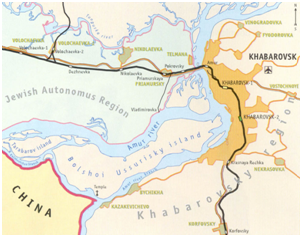 Khabarovsk, Siberia Eastern Terminus Trans Siberian Railroad
Khabarovsk, Siberia Eastern Terminus Trans Siberian RailroadToday we were very efficient; we transferred from Kyoto to Naruto on Shikoku. Jim and I are together David has left us to do his own thing. He is more interested in Northern Honshu.
This involved getting up at 6:30 a. m.
to catch a train to Osaka where we left our backpacks, we also visited the post office where there was a letter from Katie, and made a reservation at the youth hostel. This is our second week in Japan.
(徳島県, Tokushima-ken?) We caught the ferry in Kobe for Takamatsu. We had a nice four hour ride across the Inland sea, passing by Awaji Island We had a bento for lunch.
In Takamatsu we had to change money. The man at the bank very friendly. He let Us change even though the bank was officially closed and even showed us the new Susan B. Anthony dollar and traded us for a paper one.
The best site in Takumatsu was栗林公園, Ritsurin Kōen?) (栗林 means chestnut grove) one of the best known and largest in Japan. It was truly beautiful. It was set next to a tree covered hill so it was hard to tell where the park stopped and true nature began. http://www.japan-guide.com/e/e5401.html
Ritsurin Park, Takamatsu, Shikoku Japan
At six o’clock we caught the bus for Naruto and arrived about seven-thirty. A man saw us walking down the road, stopped his car and took us the youth hostel, which was on the top of a hill, right next to an old wooden castle. We had fun talking with the Japanese students who were also staying the hostel. We asked so of them where they would like to go if the could go aboard.. One said New Guinea, one Austria, and two said Germany.
Tuesday Naruto/Kochi
This morning it rained, but that didn’t stop us. It was a true torrential downpour. We were heading for the straits of Naruto to see the whirlpools. We stopped at a fire station to asked for directions. They drove us right to the park. It was an emergency rescue.
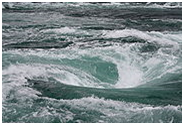 Tokushima Whirlpool, Shikoku
Tokushima Whirlpool, ShikokuNaruto park contains the whirlpools which form in the narrow channel , one kilometer between Shikoku and Awaji islands (淡路島, Awaji-shima?). We took the boat ride in the rain an 11:50—during high tide. We meet some girls who rode with us from Naruto to Tokushima and the on to Awaji Island where they got off. There is now a bridge which connects Shikoku and Awaji with Honshu.
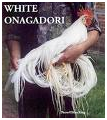
Jim and I rode on to Kochi. The train ride was beautiful, we rode along the river valley through many tree covered mountains.
After checking in at the hostel (Y1300) about double what we had been paying, I Think. We went out to look around. We ended up walking down the Page Ave of Kochi and saw nothing but auto dealers and tire stores. We did see the Giants baseball game on TV, including everyone’s favorite number 1, Oh.
Wednesday Kochi/Matsuyama
Today in Kochi we went to the Onagadori Center famous for raising roosters with very long tails. Some as long as 11 meters. This center was also visited by President JFK before his assassination. Prince Yamanouchi of the Kochi Prefecture on the southern peninsula of Shikoku had the helmets and spears of his soldiers adorned with long rooster feathers for special occasions.
Afterwards we toured Kochi castle. It had a nice view and a small collection of Samurai artifacts including armor and swords. WE have seen many castles. During feudal times every town of great size had its own castle all very elaborate and unlike Europe they almost all look the same from the outside, differing mainly in size.
Next we moved on to Matsuyama by hitchhiking. It took awhile to get the first ride. A man took us as far as he could go, but he had to stop because of a rock slide blocking the highway. We walked around the rock slide and had another ride in fifteen minutes.
Our big activity in Matsuyama was a sukiyaki dinner in the Okaido district. It was delicious We ate at Gimpai. Two ladies ran it and the seemed to really enjoy what they were doing. Sukiyaki(すき焼き; スキヤキ)is basically a stew with beef and vegetables cooked at the table. It is very good and all dipped in raw egg. Like many Americans my age this James Bond movie You only live twice served as our introduction to Japan and Japanese culture. Japan, Space Race, Nancy Sinatra, etc.
We see vending machines all over Japan offering strange drinks for sale. This will be useful to me in a few months when I start working for the Seven-Up company in St. Louis. Returning to the hostel, we joined the Japanese for singing songs and card playing until midnight.
THANK YOU FOR FOLLOWING THIS BLOG. Do you live in JAPAN? Have things changed since I visited 30 years ago?
YOUR COMMENTS ARE WELCOME.
Related articles
- 4 Best Places to Go for Shopping in Tokyo (explorejapanblog.wordpress.com)



